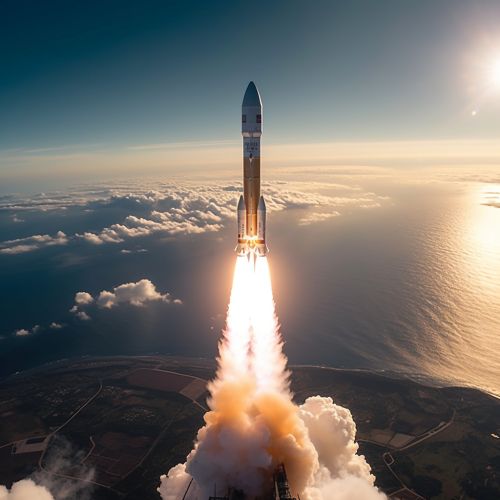Ariane 5
Overview
The Ariane 5 is a heavy-lift launch vehicle, part of the Ariane rocket family, an expendable launch system designed by the European Space Agency (ESA). It is used to deliver payloads into geostationary transfer orbit (GTO) or low Earth orbit (LEO).


Development
The development of the Ariane 5 was agreed upon in the 1987 Horizon 2000 plan of ESA. The main goal was to create a rocket capable of launching heavier payloads into orbit compared to its predecessor, the Ariane 4. The development process was fraught with difficulties and setbacks, including a catastrophic failure on its first test flight.
Design
The Ariane 5's design evolved from the earlier Ariane models and has been enhanced since its initial flights. The rocket is composed of a main cryogenic stage (EPC) and two solid rocket boosters (EAP), with an upper stage (ESC or EPS) that is used for payloads requiring GTO or interplanetary trajectories.
Launches
Since its first flight in 1996, the Ariane 5 has been launched over 100 times. Its most notable payloads have included the Rosetta and Philae probes, the Herschel Space Observatory, and the ATV supply spacecraft for the International Space Station.
Future
The Ariane 5 is expected to be succeeded by the Ariane 6, currently under development, which promises to continue the Ariane lineage with improved technology and capabilities.
